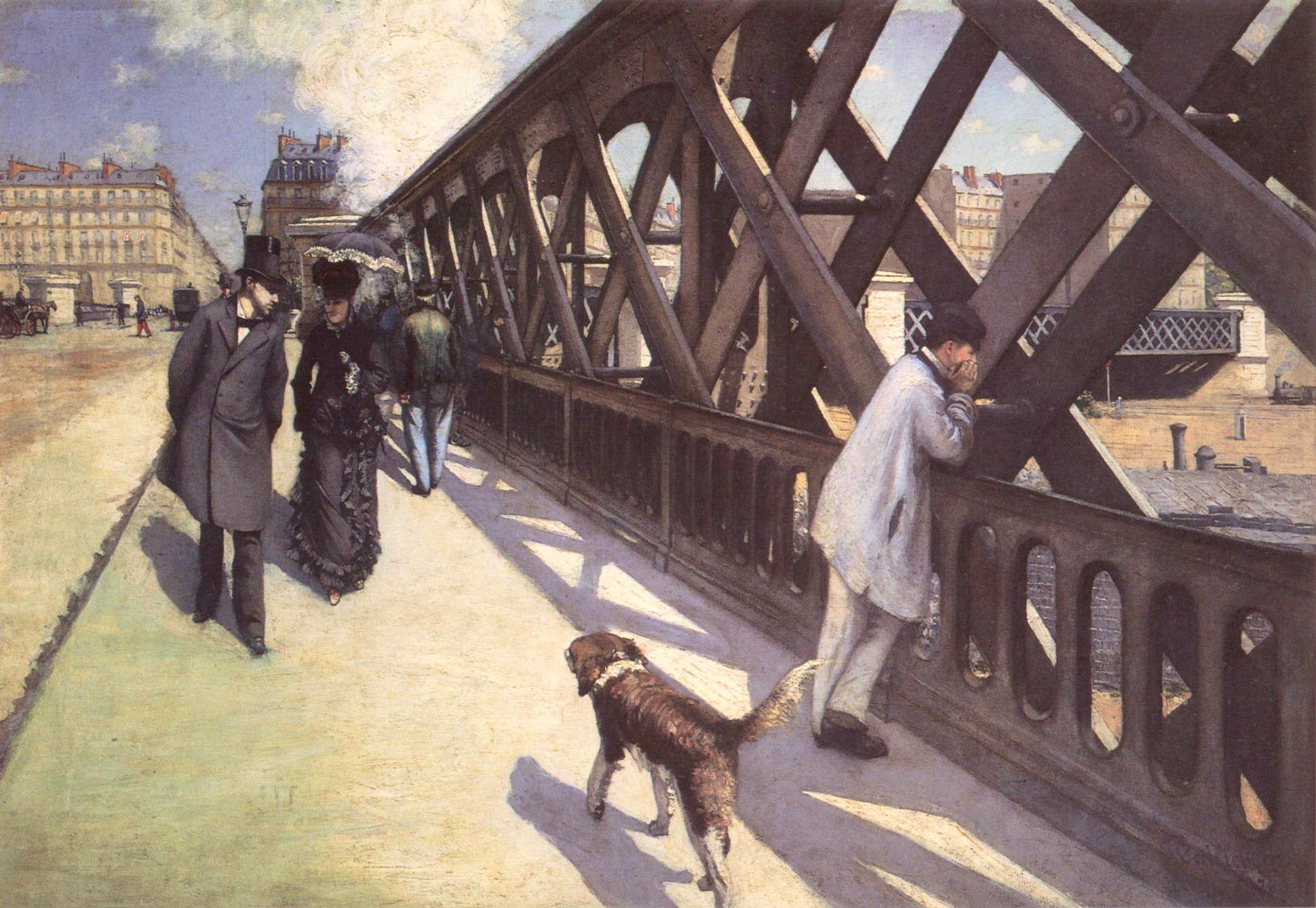



The Europe Bridge
oil on canvas • 125 x 181 cm
The image shows pedestrians in the Place de l'Europe in the 8th arrondissement of Paris. The plaza is a large bridge joining six avenues, each named for a European capital, over the railroad yards at Gare Saint-Lazare. The view is from the rue de Vienne, looking towards the center of the plaza. One of the bridge's trusses is very prominent, visible in half of the image.
Three individuals are seen in the foreground: a couple walking toward the observer, and a working-class man peering off the bridge toward the train station. A dog walks away from the observer, and other individuals appear in the mid-background. The man of the couple is a flâneur, an upper-class street observer. He is strolling with a woman dressed in black. She has often been interpreted to be a prostitute, according to contemporary social norms regarding women in public, especially in the area of the train station. Alternatively, the man has been thought to be Caillebotte himself, and the woman to be Caillebotte's companion, Anne-Marie Hagen. The flâneur is looking past his companion in the direction of the other man. Feminist art historian Norma Broude has suggested that Caillebotte, a lifelong bachelor, is signalling his own homosexuality with this gaze. In this reading, Caillebotte is an upper-class man cruising for a lower-class male prostitute in this unsavory neighborhood of Paris. However, Caillebotte's sexual orientation is not definitively known.
This one is for Leon Bedeau and all the great people working at the University of Liverpool :))